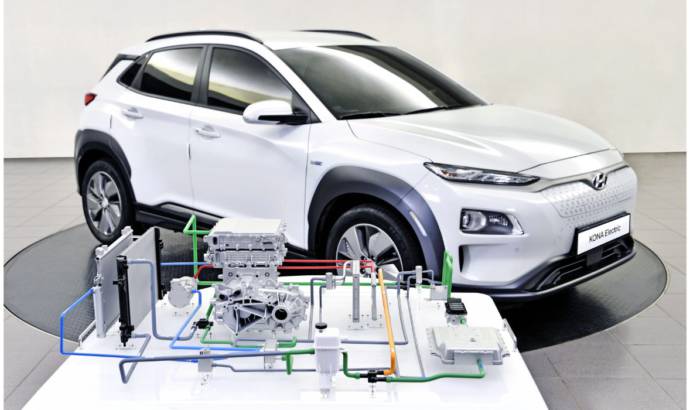Kia and Hyundai have a strong range of electric vehicles. And they are about to improve their efficiency with a new update. Both car makers revealed new details of their innovative heat pump system, deployed in Hyundai and Kia’s global electric vehicle (EV) line-up to maximize their all-electric driving range in low temperatures.
Hyundai and Kia’s heat pump is a leading heat management innovation that maximizes the distance that Hyundai and Kia EVs can travel on a single charge, scavenging waste heat to warm the cabin. It enables EV drivers to heat their car’s cabin in cold weather without significantly impacting electric driving range, unlike other EVs.
The technology was first introduced in 2014 on the first-generation Kia Soul EV. Comprising a compressor, evaporator and condenser, the heat pump captured waste heat given off by the vehicle’s electrical components, recycling this energy to heat the cabin more efficiently. The technology meant the Soul EV’s 180 km electric range was protected in cold weather driving conditions.
The industry-leading heat pump system has now been developed further for new EVs from Hyundai and Kia. The new system scavenges waste heat from an increased number of sources for optimum cold-weather EV range. These innovations mean that Hyundai and Kia EVs offer more consistent range in temperatures where other EVs start to see a significant decline in the distance possible from a single charge. Equipped with the latest heat pump technology, the Kona Electric proved this in a recent test in Norway, the most advanced EV market in the world.
It now harvests significantly more energy by recycling additional waste heat not only from power electrics (PE) modules (such as drive motors, on-board chargers, and inverters), but also from the battery pack and slow charger.
The system uses the heat generated by these components to vaporize refrigerant from liquid to gas form. High-pressure gas is discharged from the compressor and forced into a condenser to be converted back into a liquid. This process generates additional heat energy that is recovered by the heat pump and used to warm the cabin.
This captured energy improves the efficiency of the HVAC (heating, ventilation and air conditioning) system, recycling it to more efficiently heat up the cabin and minimize battery power consumption. By reducing the load on the battery, the heat pump cuts energy consumption from the HVAC system, maximizing the available electric driving range of the car.



